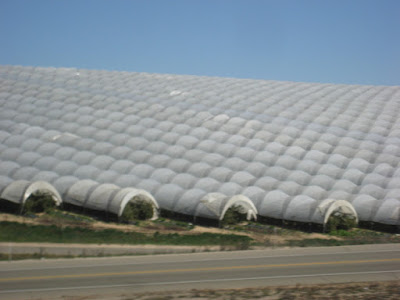Solvang
means ‘sunny fields’ in Danish. For me, it meant twelve hundred miles over six
days up and down the Central California Coast. Our trio of merry travelers had done
the PCH from Newport Beach all the way down to San Diego by car and train.
That’s the part of California that gave us Brian Wilson, ‘Surfin Safari’ and
‘California Girls.’ This part of the state was different. It offered up miles
of rocky shoreline, endangered elephant seals, and a throwback in time with
rugged shorelines and ancient tales of wilderness mysteries.
This
new journey up along the Pacific Coast Highway had my friends and me exploring
the rugged Big Sur coastline up to Monterey; a long desired trip I hadn’t yet
taken until now. California in all of its complexity in land and people cuts a
broad swath of culture, attitude, and terrain.
Climate
and ecology play a tremendously important role in California’s ever changing
geology. Recently severe drought brought forest fires then flooding and
mudslides to many parts of the state. What doesn’t affect Northern California
brings something different to Southern California. The entire state is a
temperate one but while Northern California has coastal fog and closeness to
the Sierra Mountains, the coastal regions of Southern California have a more
moderate Mediterranean climate.
Sharon
and I were traveling with our dear friend, LaDonna, an old cohort of Sharon’s
from her days in academia. We started in Solvang, a town of five thousand souls
that has re-branded itself as a modern day European village. Its authenticity is
such that it actually brought me back to my old days of wandering the back
alleys and cobblestone footpaths of Copenhagen.
From
there we set out to explore the Central California Coast. That region cuts a
broad swath of huge agricultural operations, wineries and ranches. Poor farm
workers harvesting the crops work alongside ranch owners whose operation has
been a family affair for literally hundreds of years.
Santa
Barbara and the whole Central California Coastal area have long harbored a
reputation for astronomical real estate prices. OMG is a familiar refrain among
buyers when perusing the real estate magazines.
Nondescript,
average homes climb up over one another on any available hillside. If there’s
an ‘ocean view’ it automatically adds hundreds of thousands of dollars to the
price tag. The closer to the beach sends those prices even higher into the
stratosphere. It’s a different kind of world up there even by our desert
standards down in Palm Springs.
For
me, the highlight of the trip was Big Sur. We began at one of breeding places
for the endangered Elephant Seals. From there we entered the narrow, twisting,
turning roadway that hugged rugged cliff faces on one side and sharp drops to
the ocean below on the other side.
Historically,
the Big Sur area was derived from that unexplored and unmapped wilderness area
that lies along the coast south of Monterey. Back in the day, it was simply
called el pais grande del sur, the Big South Country. Today, it refers to a
90-mile stretch of rugged and beautiful coastline between Carmel to the north
and San Simeon (Hearst Castle) to the south.
In
1937, the present highway was completed after eighteen years of construction at
a considerable expense even with the aid of convict labor. Electricity did not
arrive in Big Sur until the early 1950’s, and it still does not extend the
length of the coast or into the more remote mountainous areas. There is no
cellphone service so if your car breaks down, you’re truly SOL (stuck out of
luck).
In
1964-65, I was stationed at the Presidio of San Francisco. I never made it down
to Big Sur. Half Moon Bay was a far as I got on my motor scooter. Back in the
1930s and 40s, Henry Miller lived there on and off for years. He was part of an
avant-garde art colony centered around his controversial writings and
philosophy of life. Miller has a library named after him back in one of the
many deep redwood canyons that slash the mountain range bordering the area.
Jack
Kerouac followed Miller in the 40s and 50s. Then Allen Ginsburg, along with
Wavy Gravy and the Merry Pranksters, made annual pilgrimages there to smoke
dope, take LSD, and get lost inside their head.
Big
Sur is the setting for my next novel if I ever get around to writing it. It’s
called ‘The Trades’ and it deals with the publishing industry in San Francisco
and secretive characters that inhabit the deep dark impenetrable forests of Big
Sur. It’s my first shot at writing a murder mystery and so far the outline looks
pretty exciting to me (he said modestly).
There’s
talk from my adventurous companions about returning to the Big Sur area next
year. If we do, I want to explore the craggy shoreline, the rugged cliffs above
and those dark scary forests that hug the narrow roadway. It might prove to be
great research for my novel and a chance to finally do my hippie mind-tripping
thing once again.






















No comments:
Post a Comment